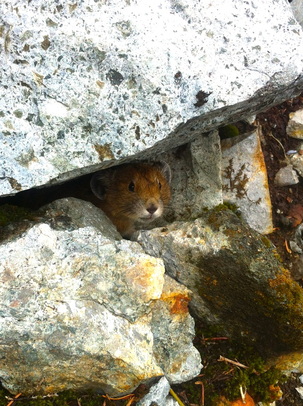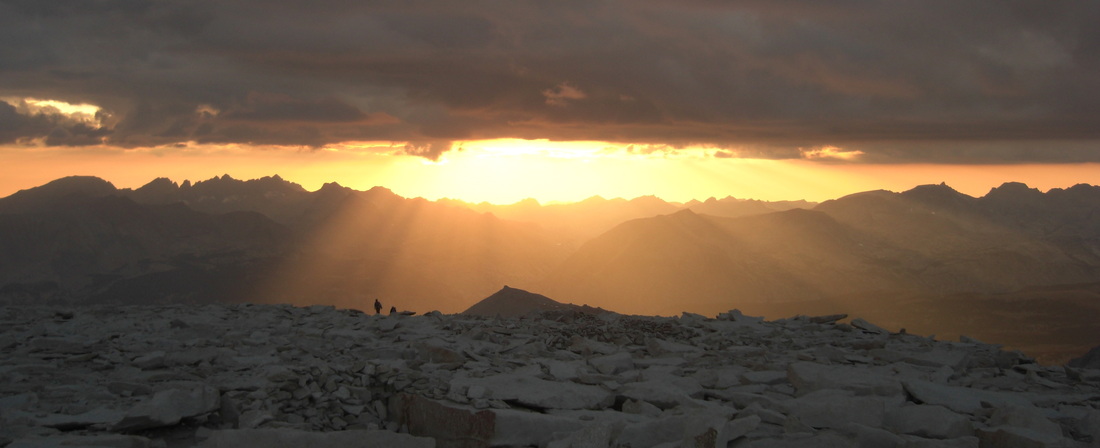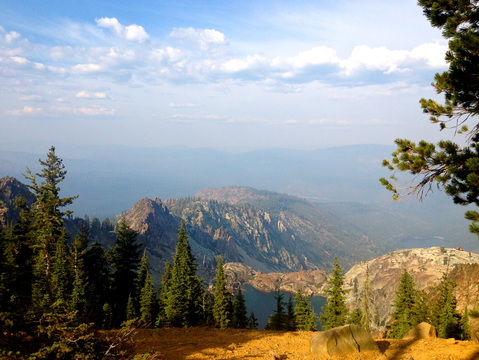 A pika peeks through talus on the PCT. (Photo by Rhiannon Johnson)
A pika peeks through talus on the PCT. (Photo by Rhiannon Johnson)
ASC Intern
Believe it or not, studying the habits and movements of pikas can help us track the effects of climate change.
Since 2011, ASC adventurers have contributed data to a collaborative study of the American Pika led by Erik Beever, an Ecologist with the U.S. Geological Survey. He has brought more than 55 researchers to the project, which has determined that pikas are among the first to suffer from global warming. Pikas are a climate indicator species, so shifts in their habits have significant implications and serve as a warning to scientists.
Measuring 6-8 inches long, pikas are the smallest member of the rabbit family. They inhabit cool, moist alpine and subalpine areas in the Mountain West—from Colorado and New Mexico to California, and north to Alberta and British Columbia.
Physiologically, pikas are not built to survive in hot temperatures, says April Craighead, a Bozeman, Montana-based pika researcher with the Craighead Institute and a partner scientist with the ASC Worldwide Pika Project. During summer, they take shelter in cool microclimates within talus slopes. “Without the refugia of talus, they will die if exposed to temperature over 80 degrees for more than six hours,” Craighead said.
According to the Fish and Wildlife Service, in the northern half of their geographic range, the American pika can be found from sea level to 10,000 feet in elevation, though further south they are almost always found above 8,000 feet.
“Normally, animals and plants would migrate upward as temperatures rise, but pikas, being already ‘at the top,’ [will eventually] have nowhere else to go,” said Dr. Adam Smith, another ASC partner also involved with Beever’s USGS project.
“We already know they have been extirpated from some of the lower ‘sky island’ mountains in the Great Basin, so it stands to reason they may be susceptible to climate change elsewhere in their range,” he explains.
Since the beginning of ASC’s pika project, 117 ASC adventurers have recorded a total of 661 observations, with nearly half of those coming from hikers along the Pacific Crest and Continental Divide trails. We make this data available to our scientists in an online database—saving the scientists both time and money, while providing outdoorspeople with a deeper sense of purpose.
“While we often disappear into the wild to get away from it all, our impact is collective… We must stay connected and work to restore, protect and promote the places we cherish. Collecting valuable data is a simple [yet] crucial process that aids in solving the greatest environmental challenges.”
Smith agrees in the value of involving the public in research like his.
“For centuries our knowledge of biodiversity was formulated by a handful of professional naturalists and wildlife experts,” Smith said. “Citizen science has been tremendously helpful in documenting patterns […] and is now the greatest source of information about life on Earth.”


